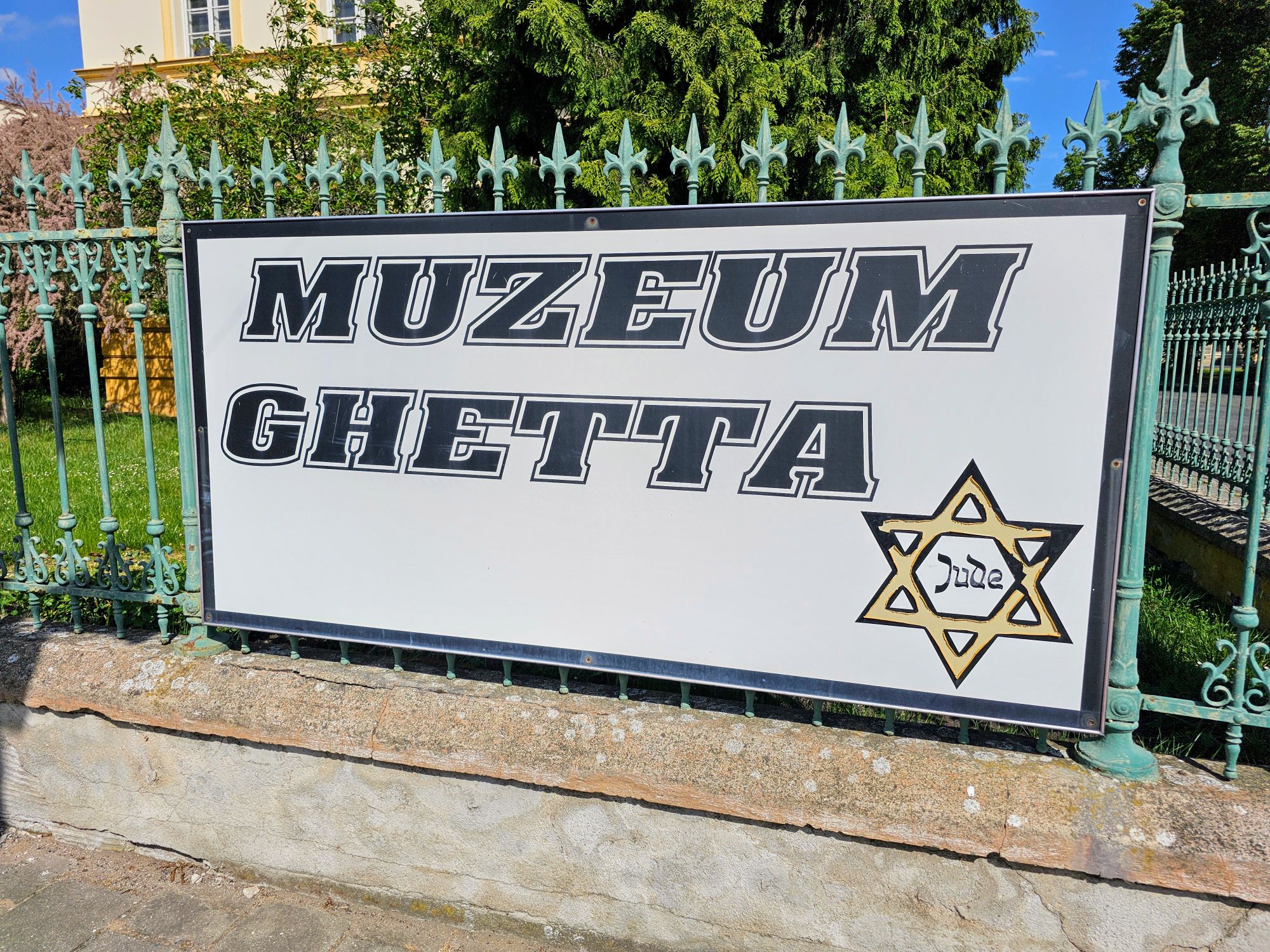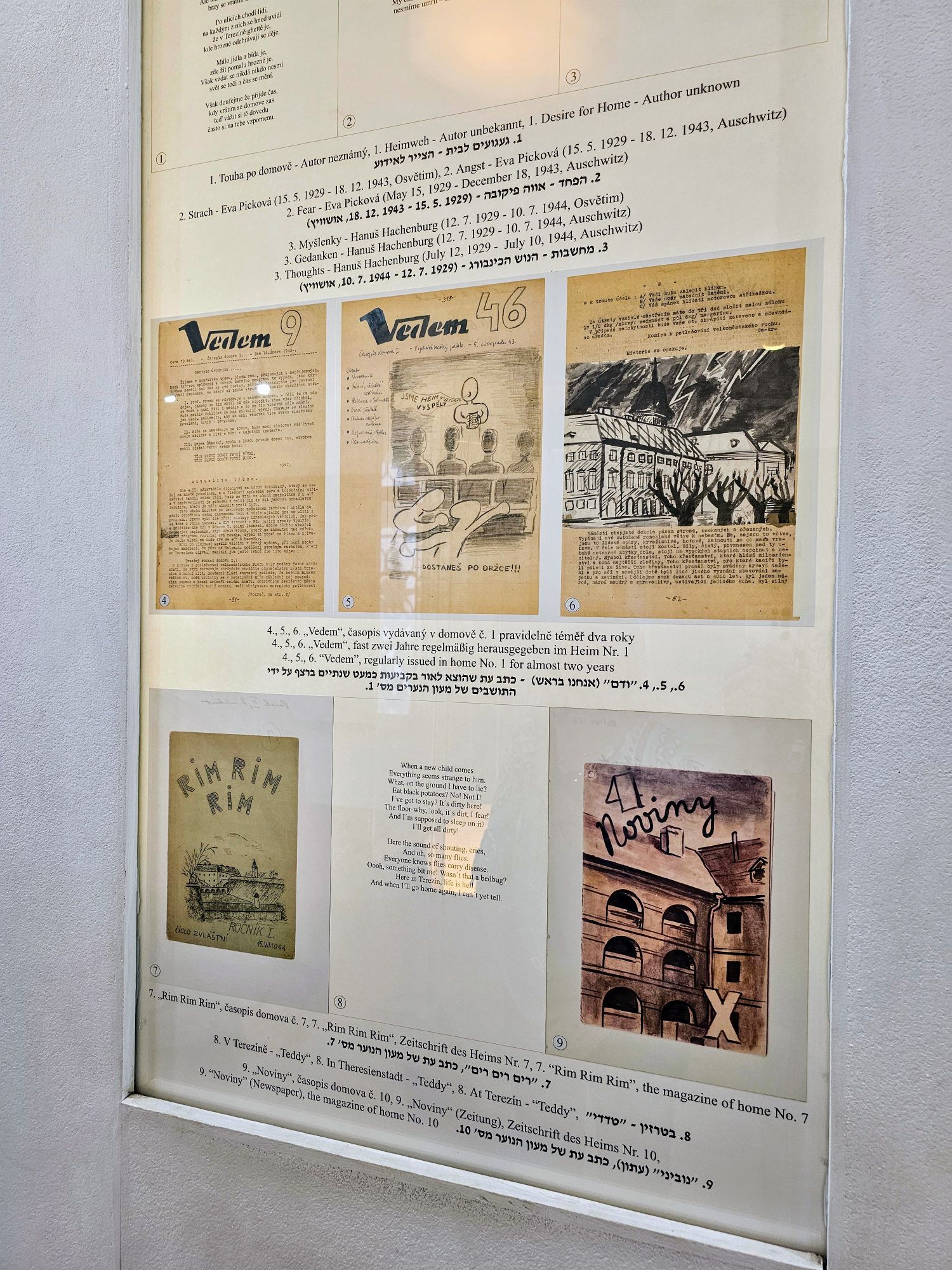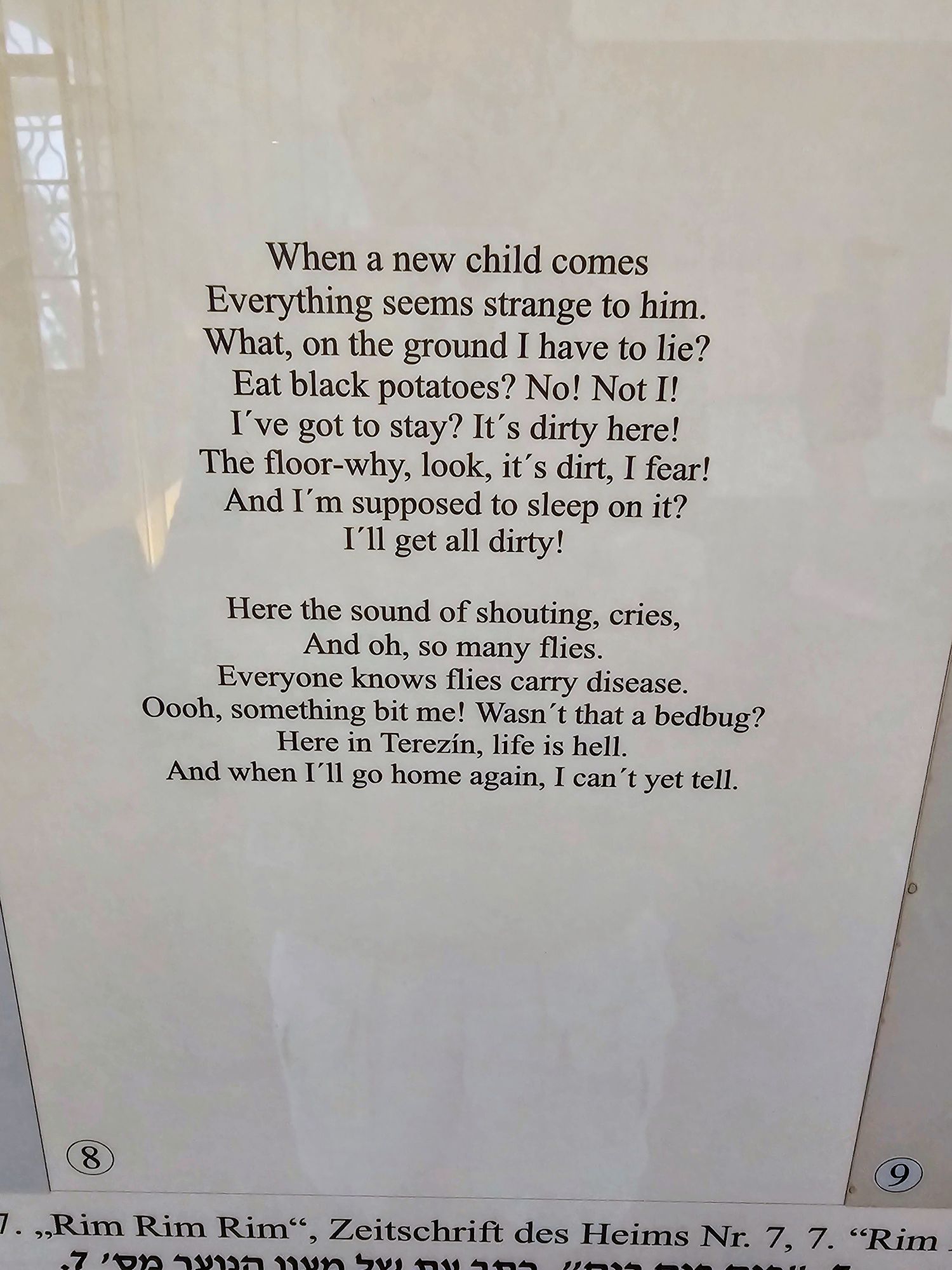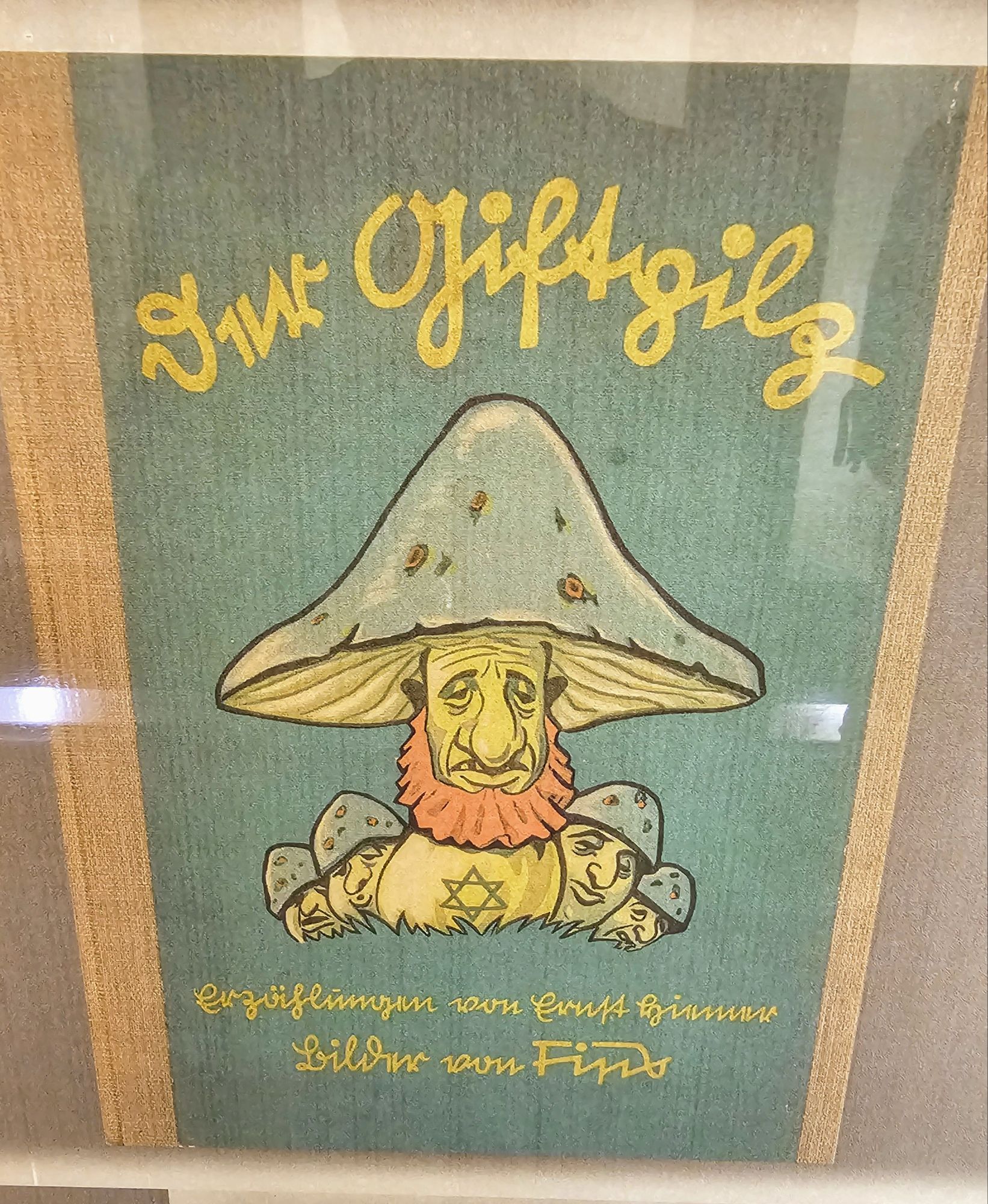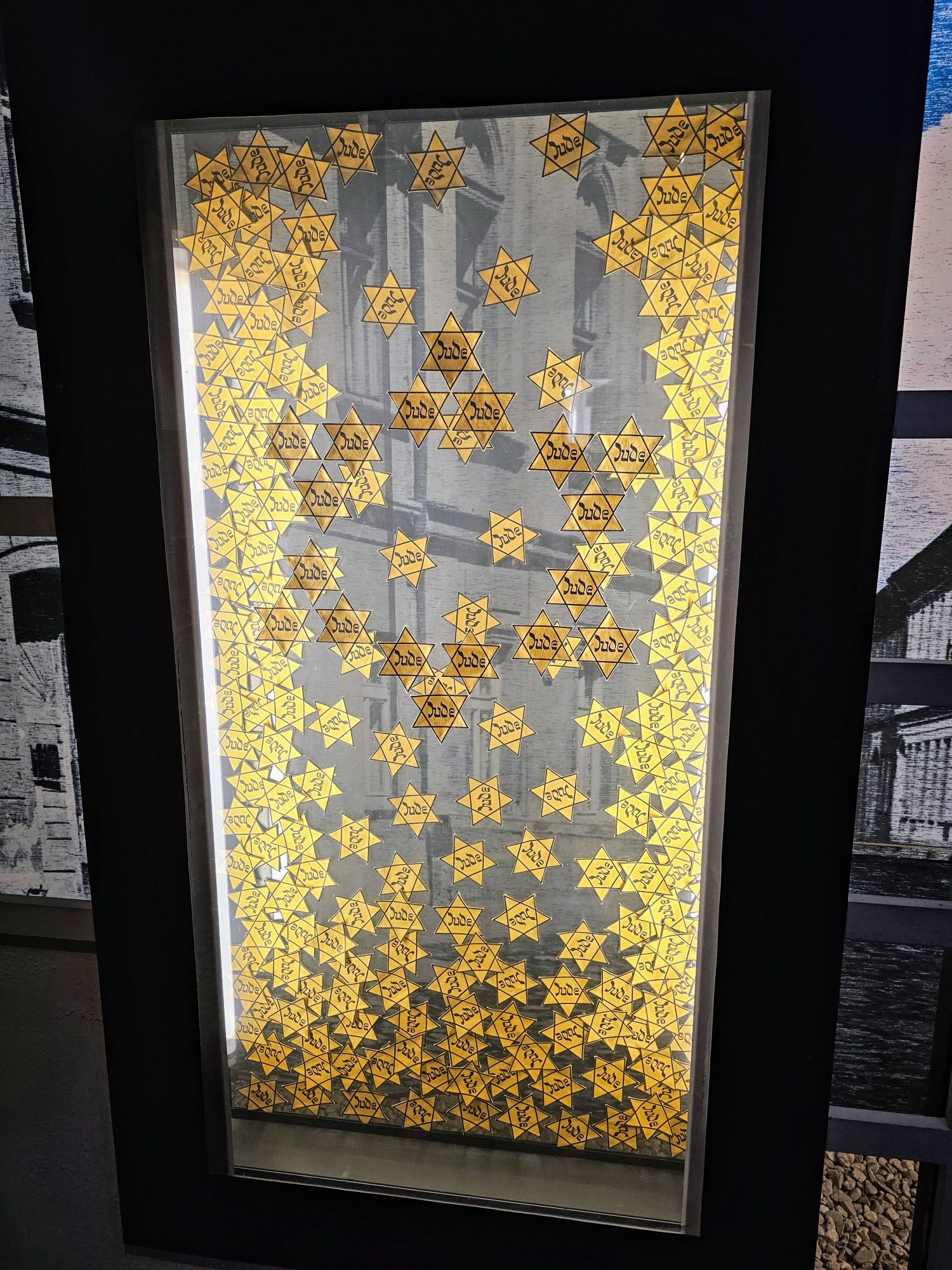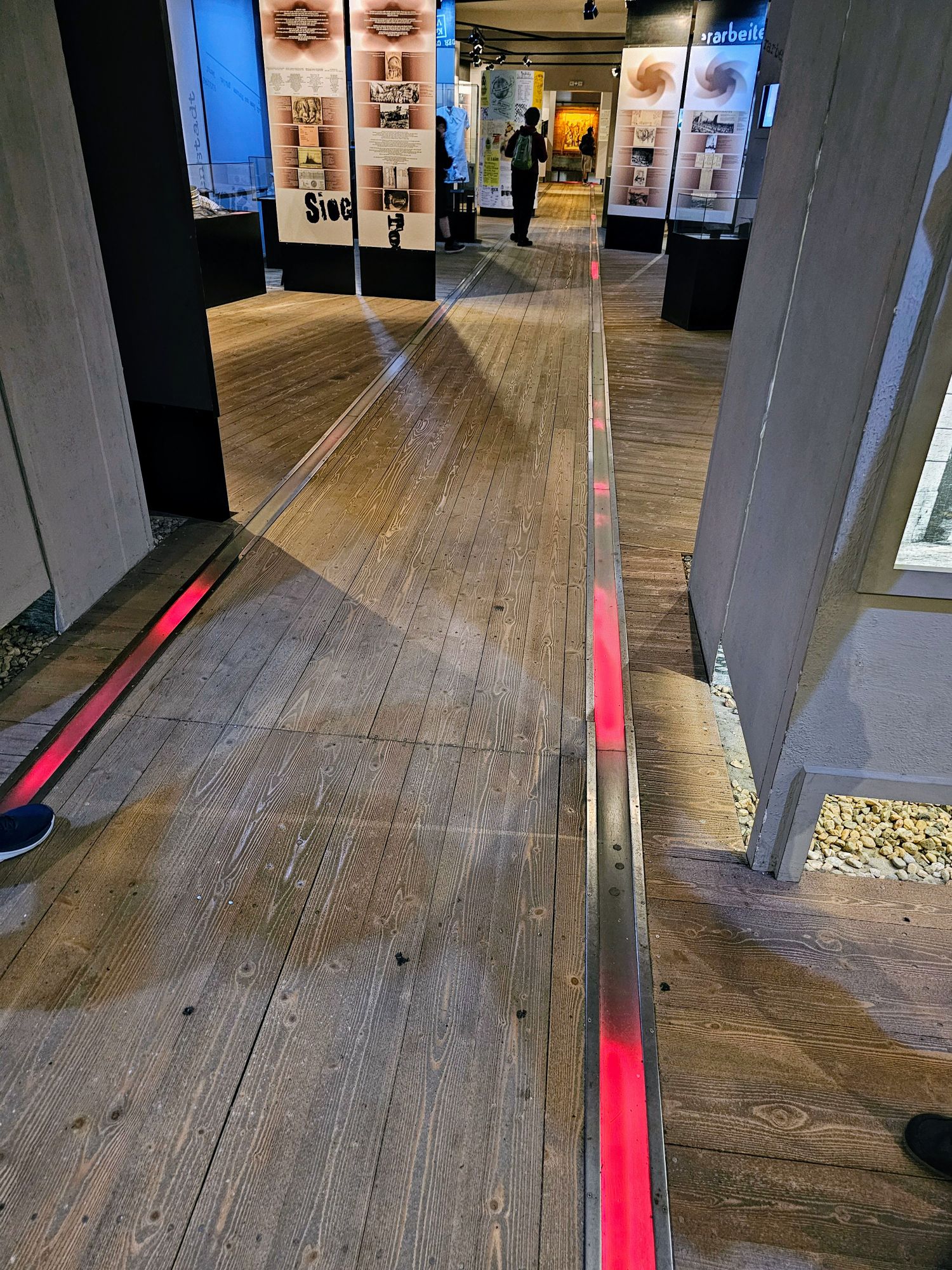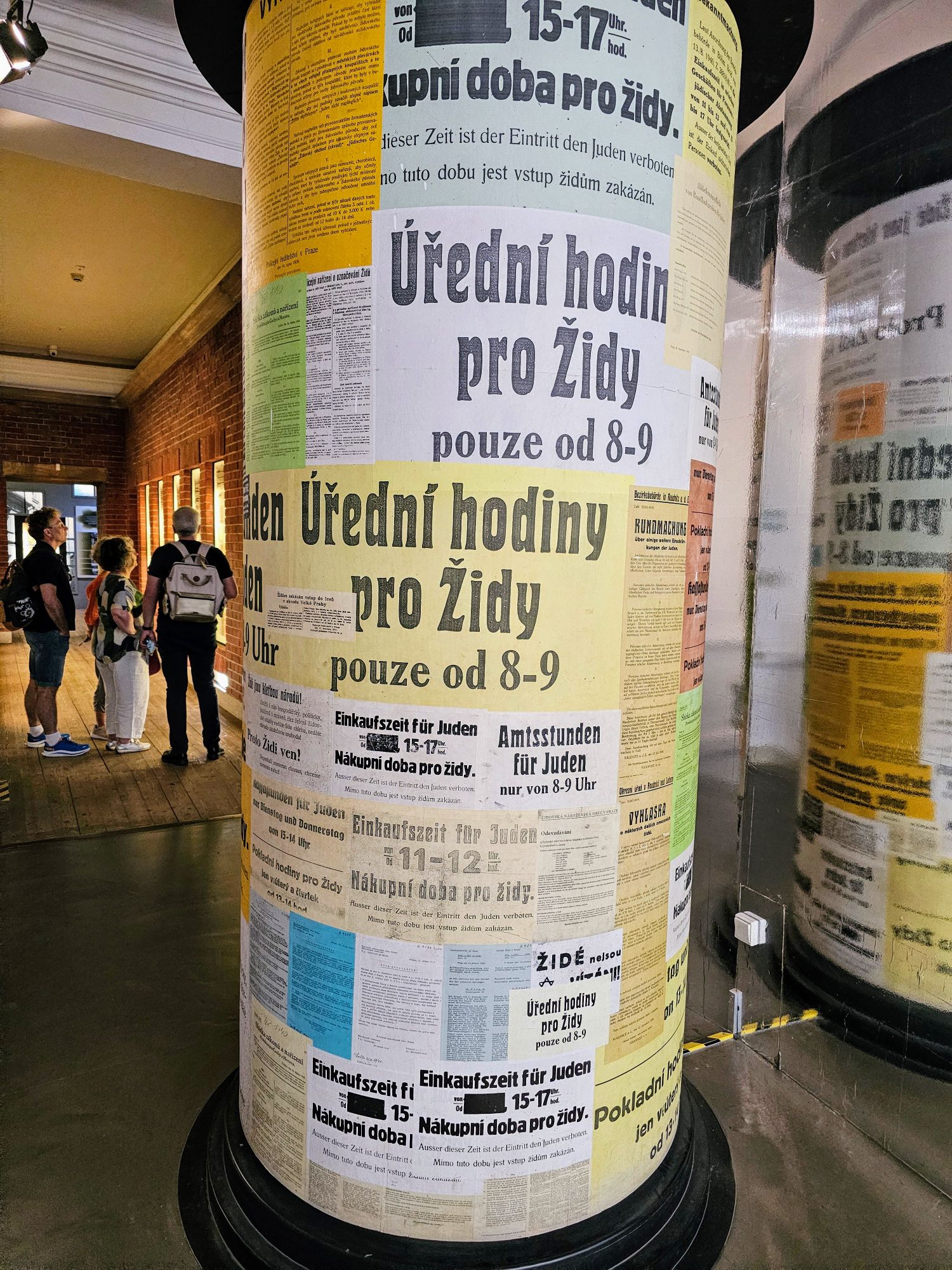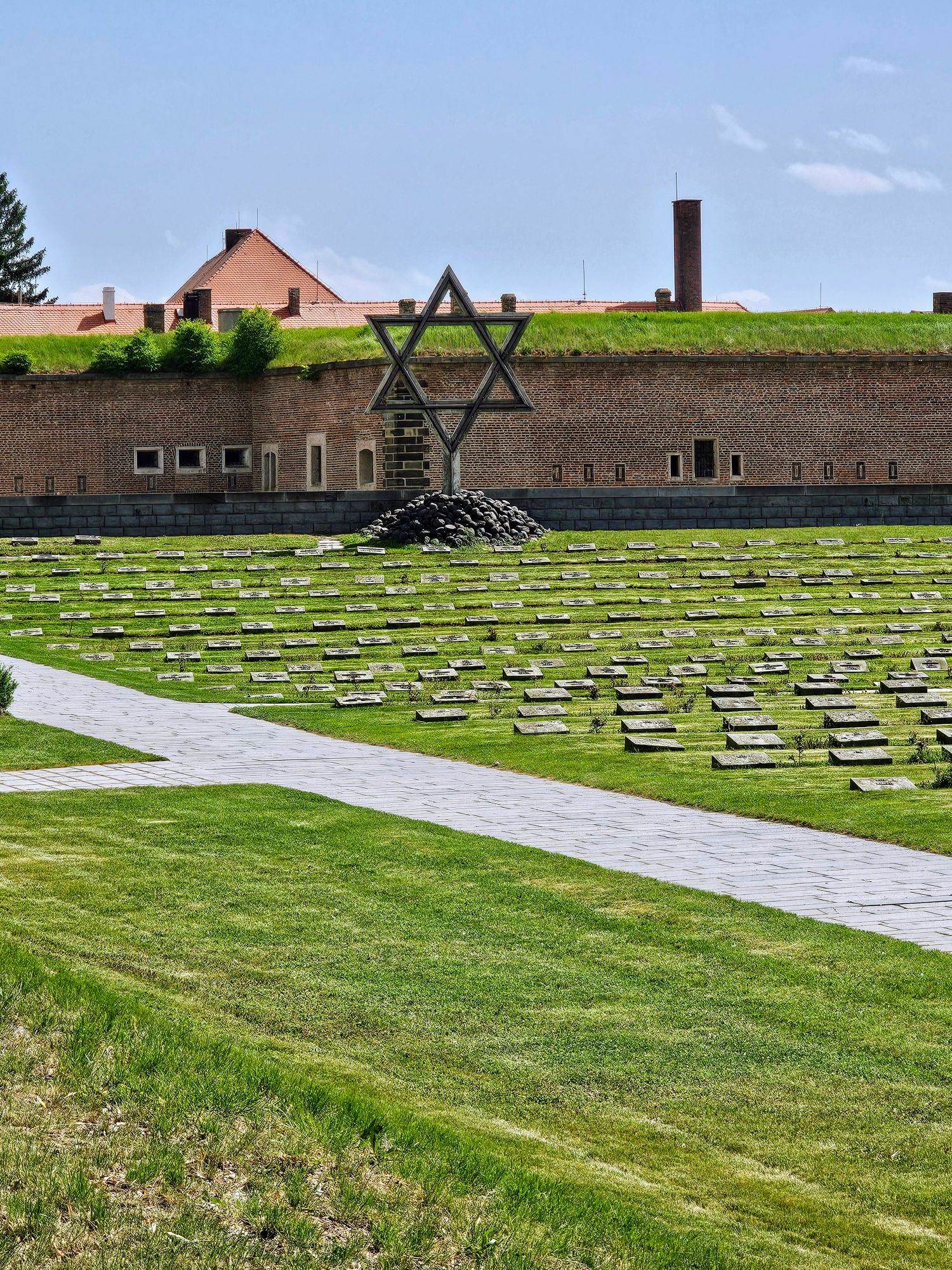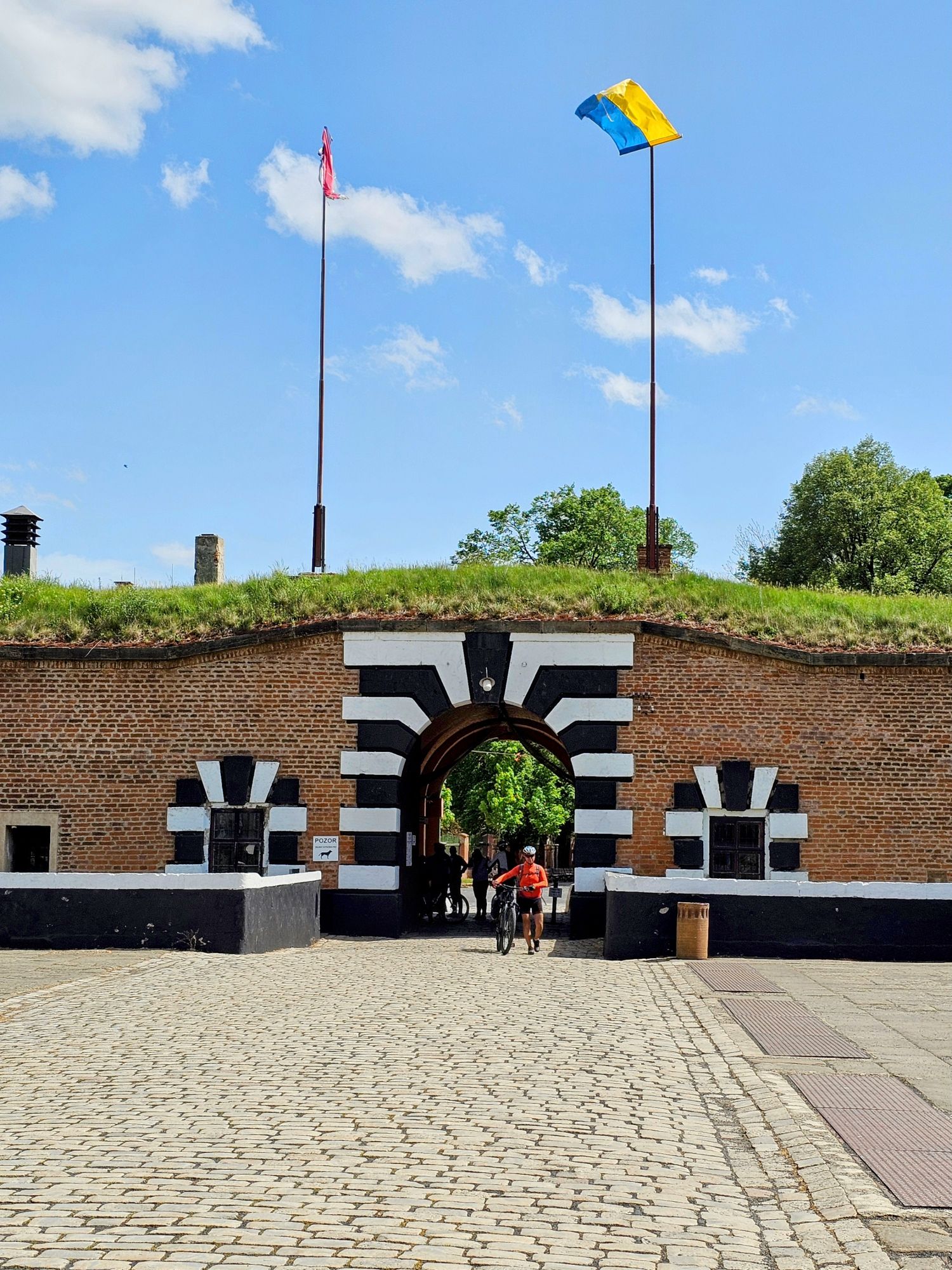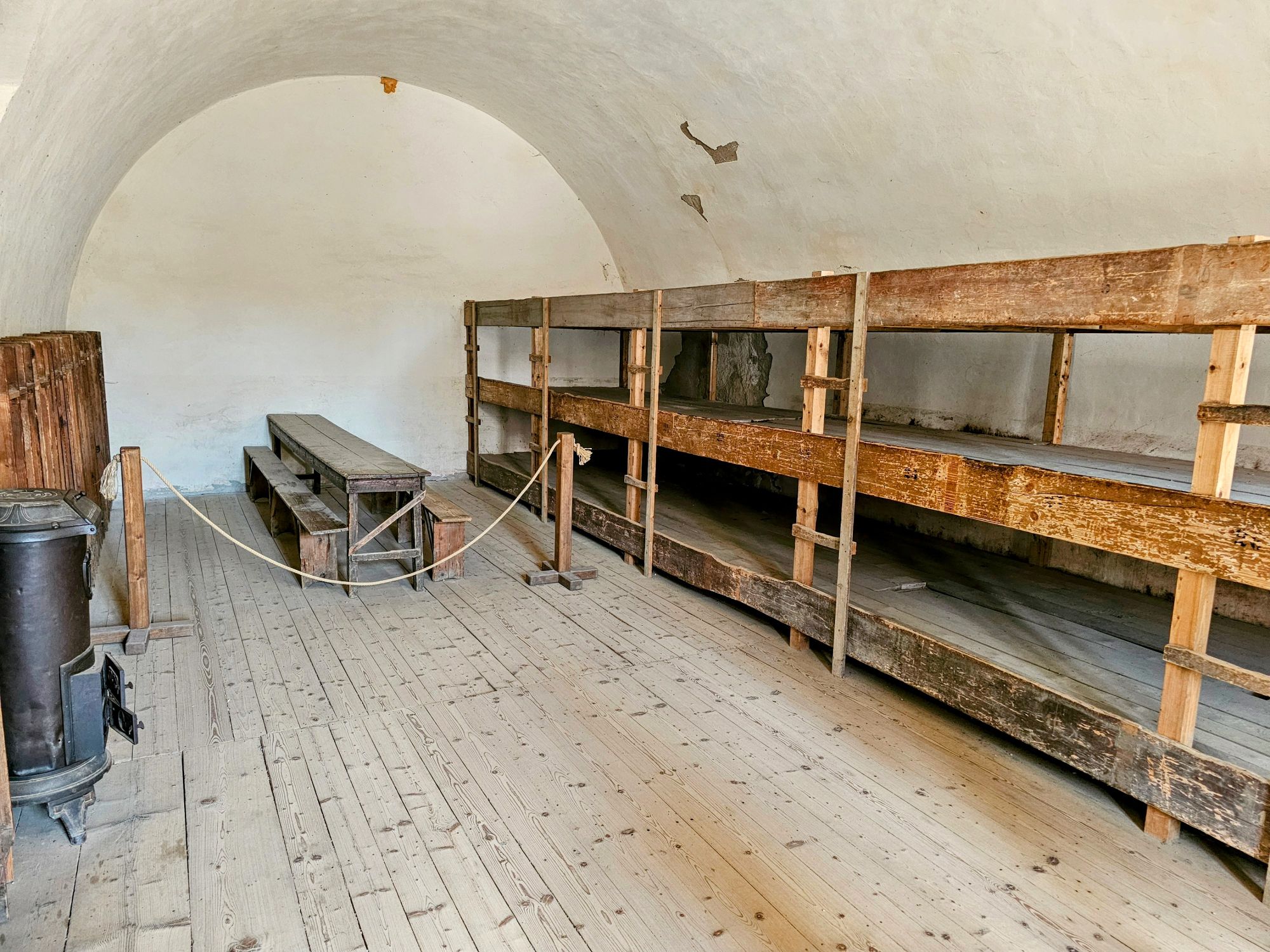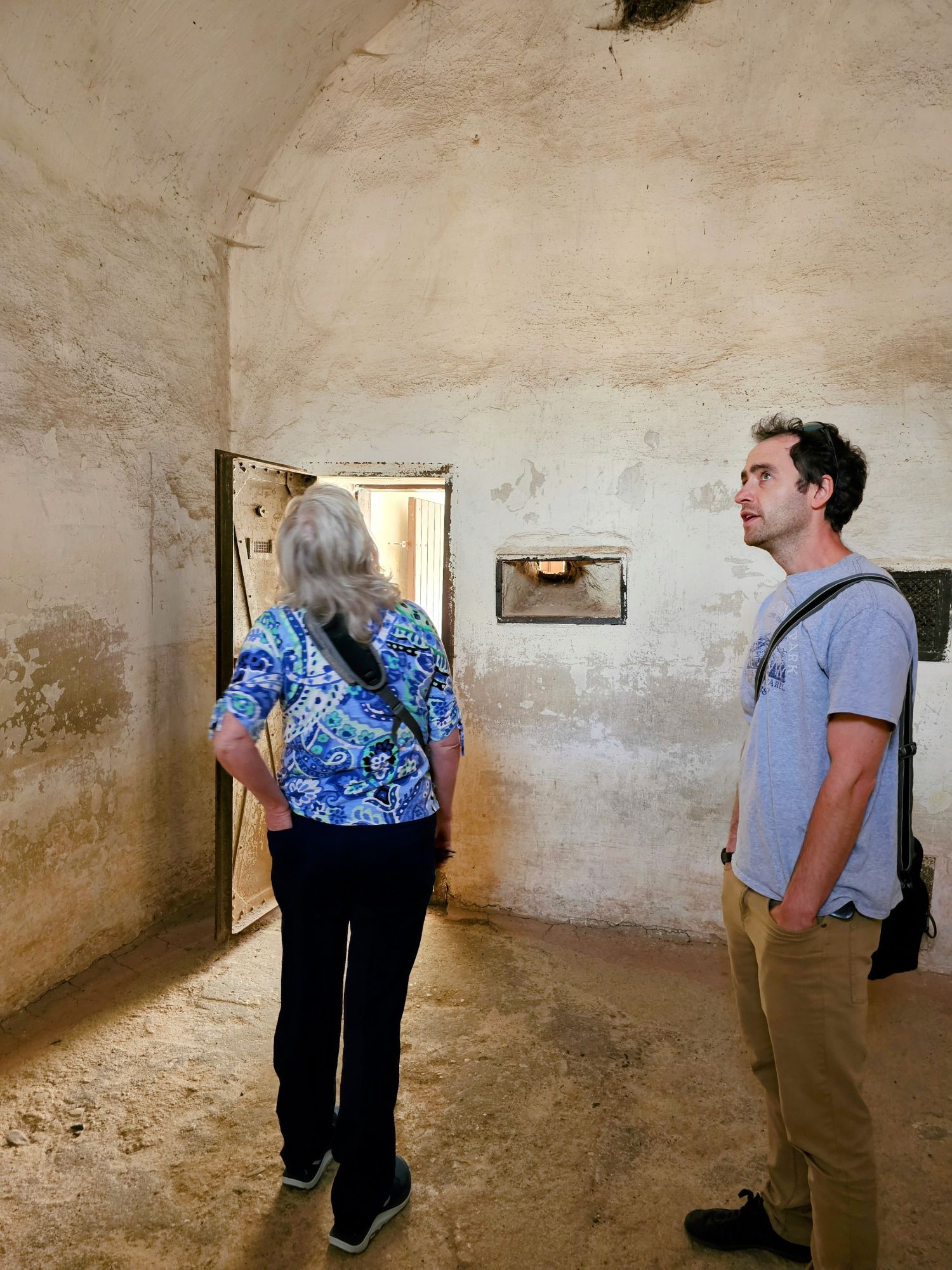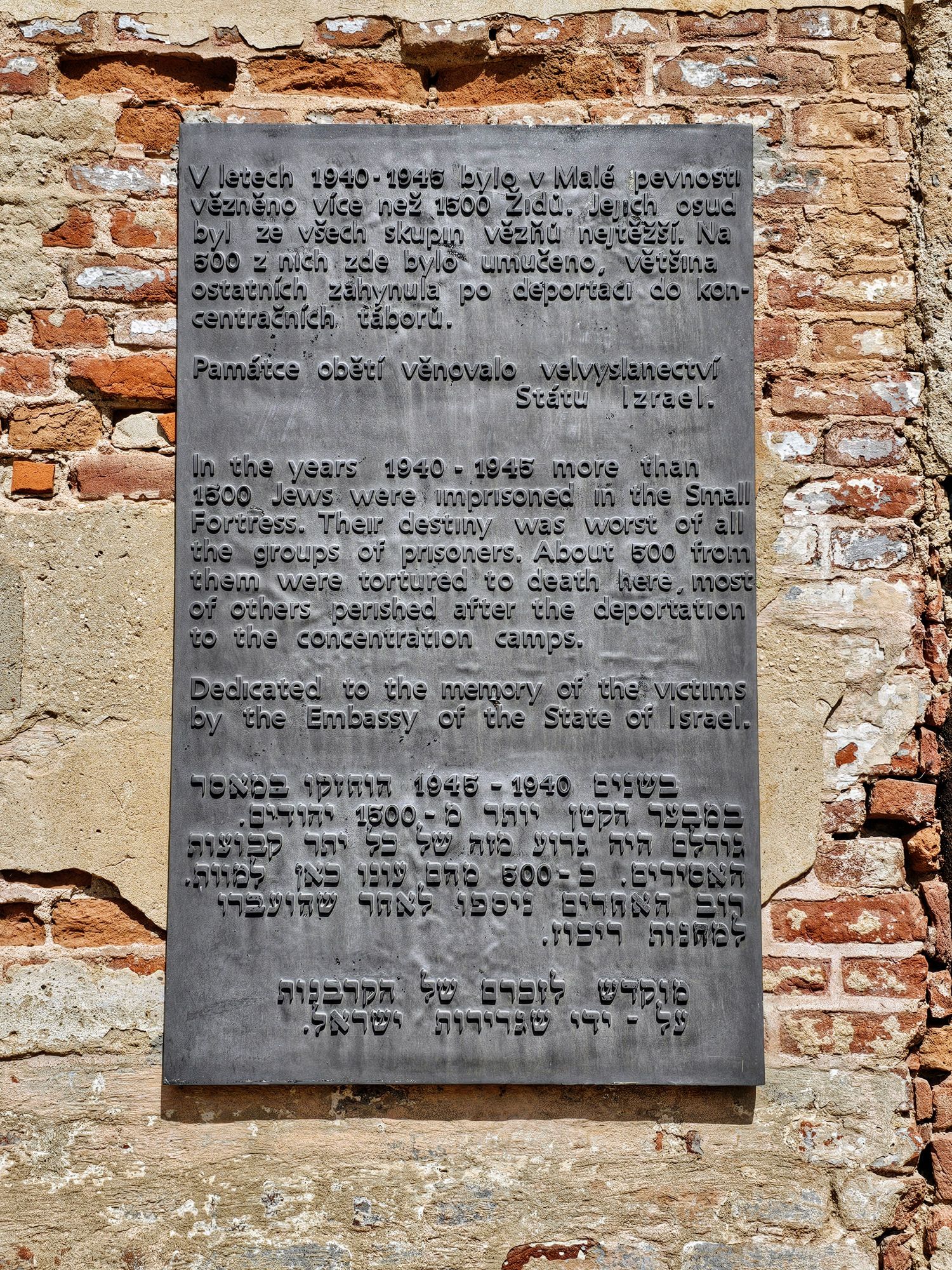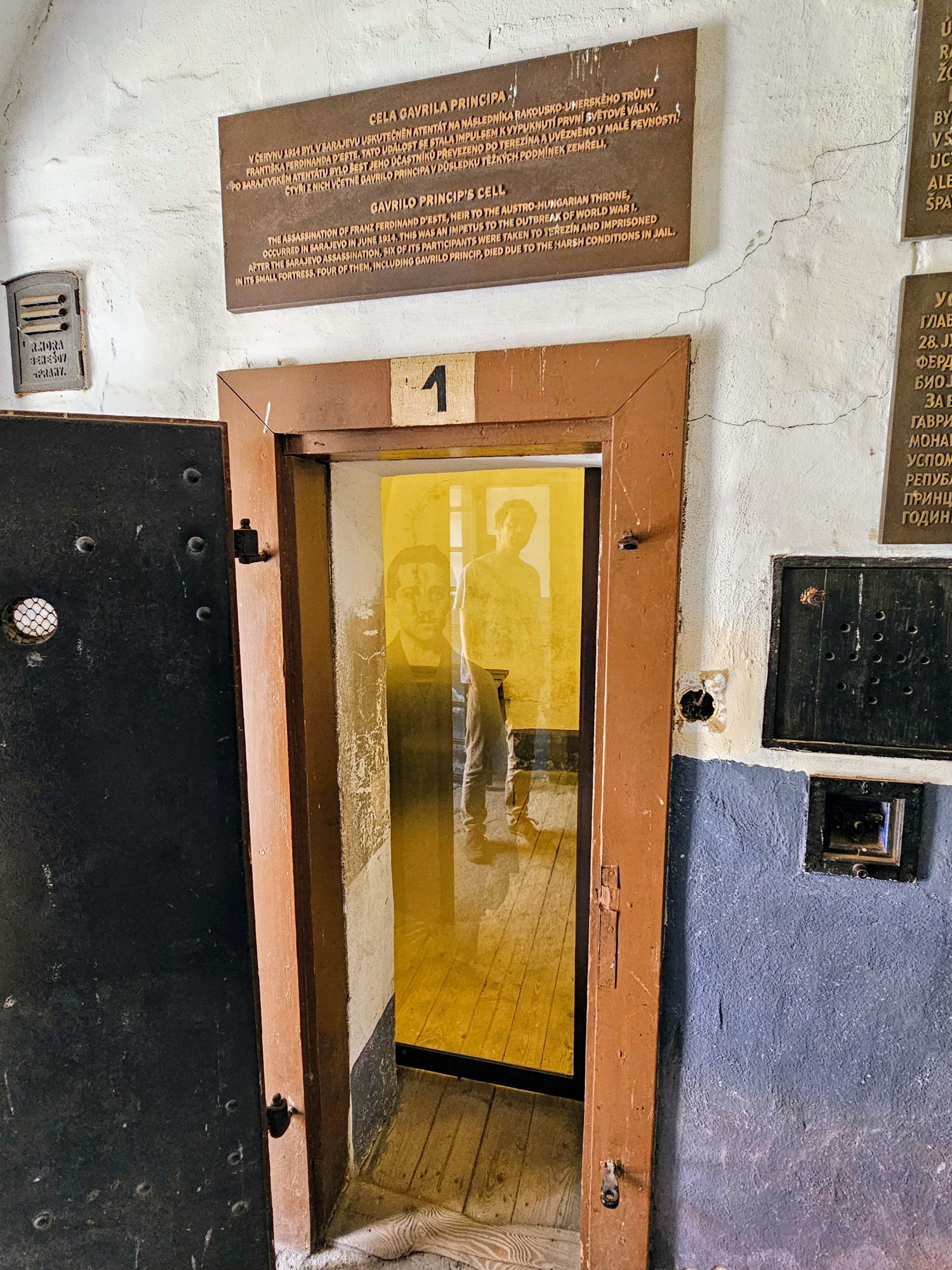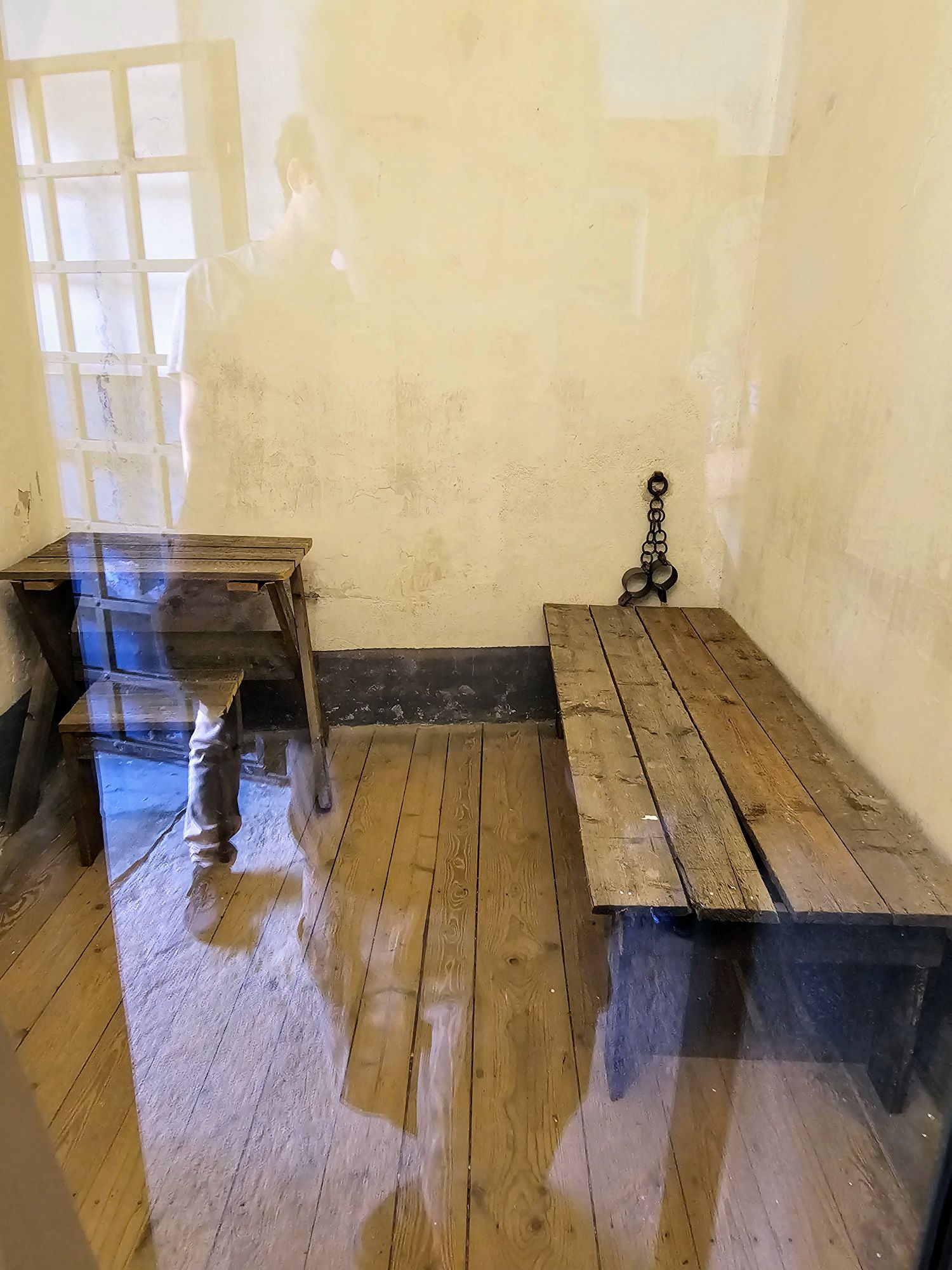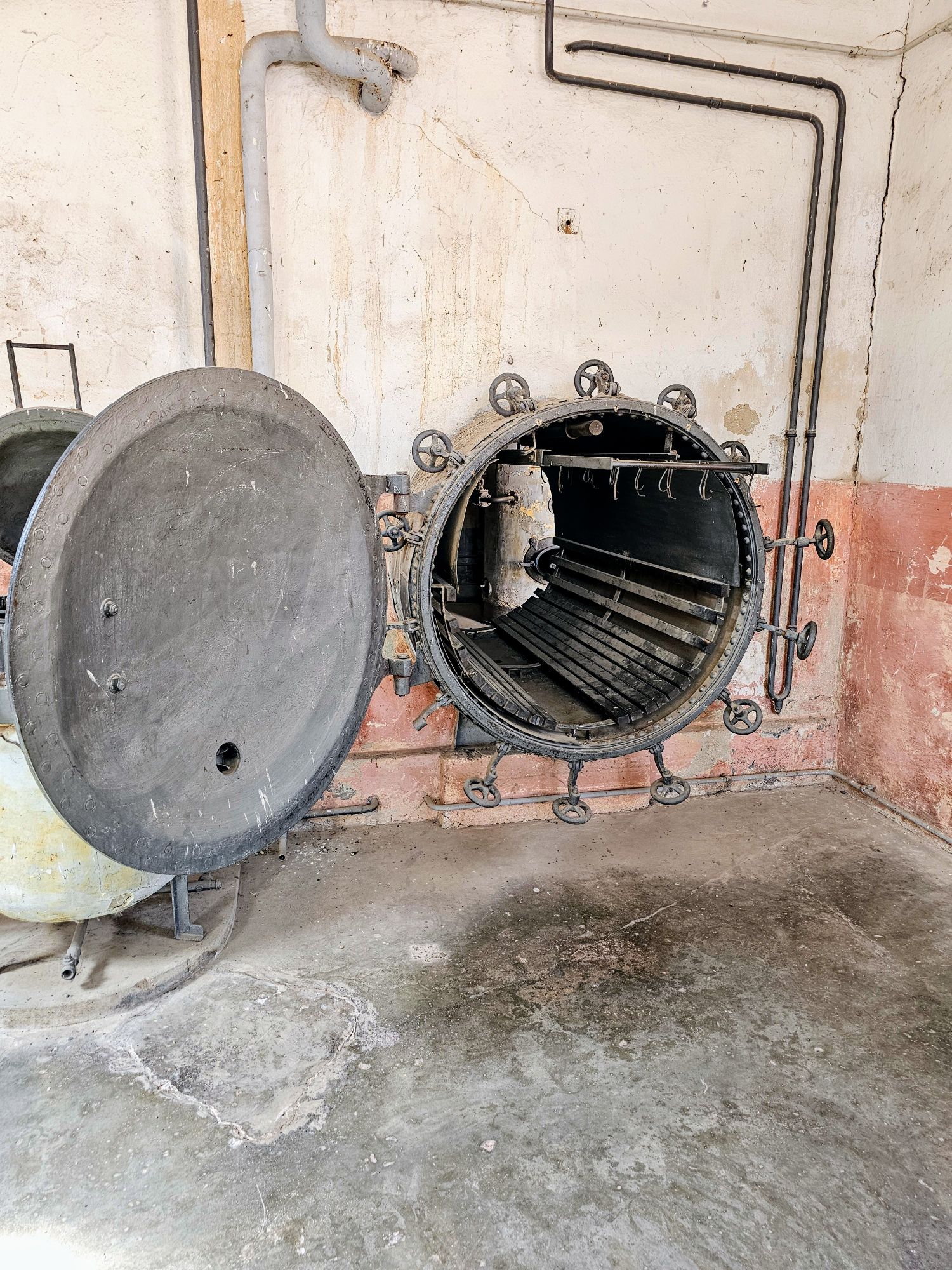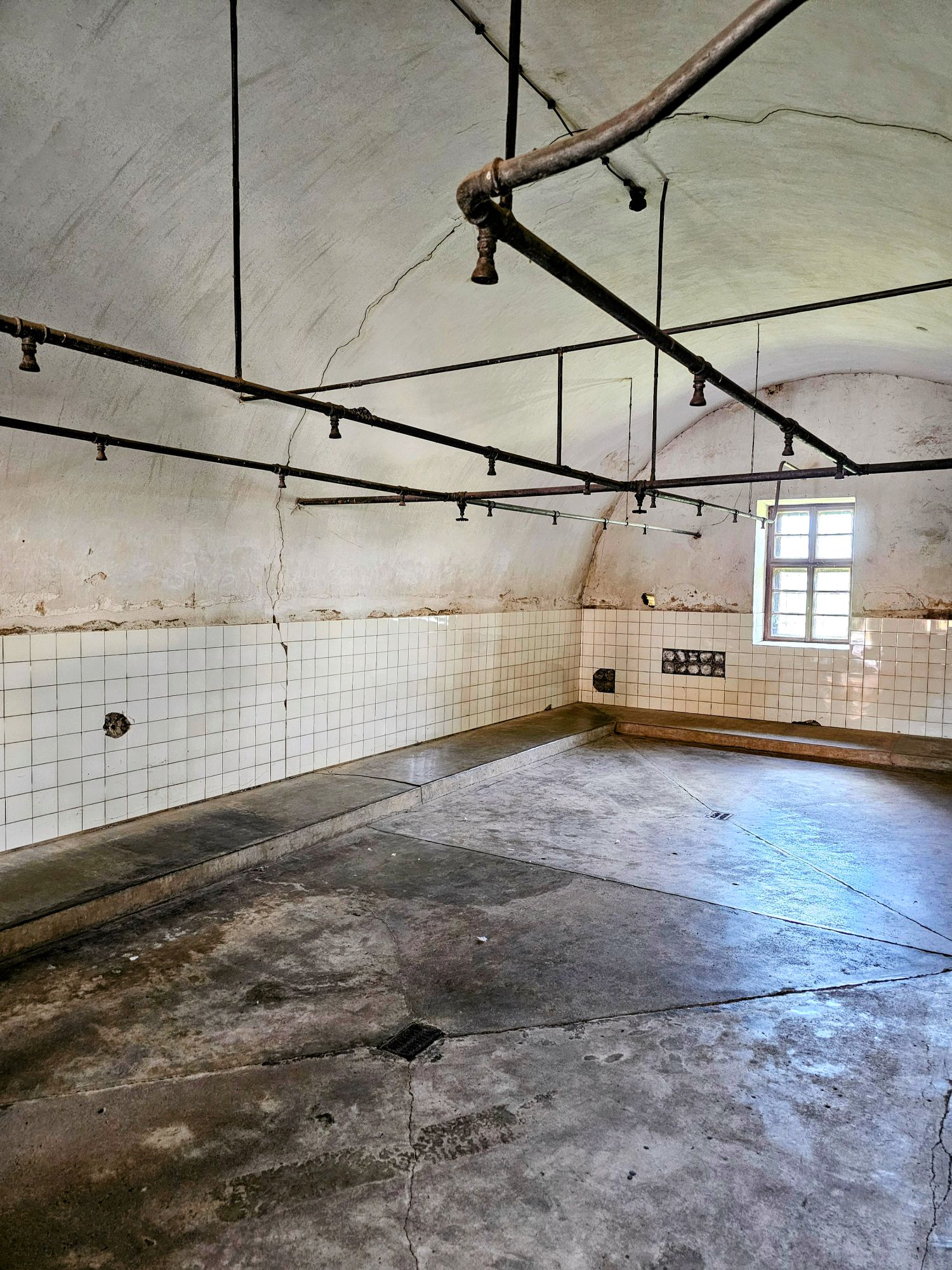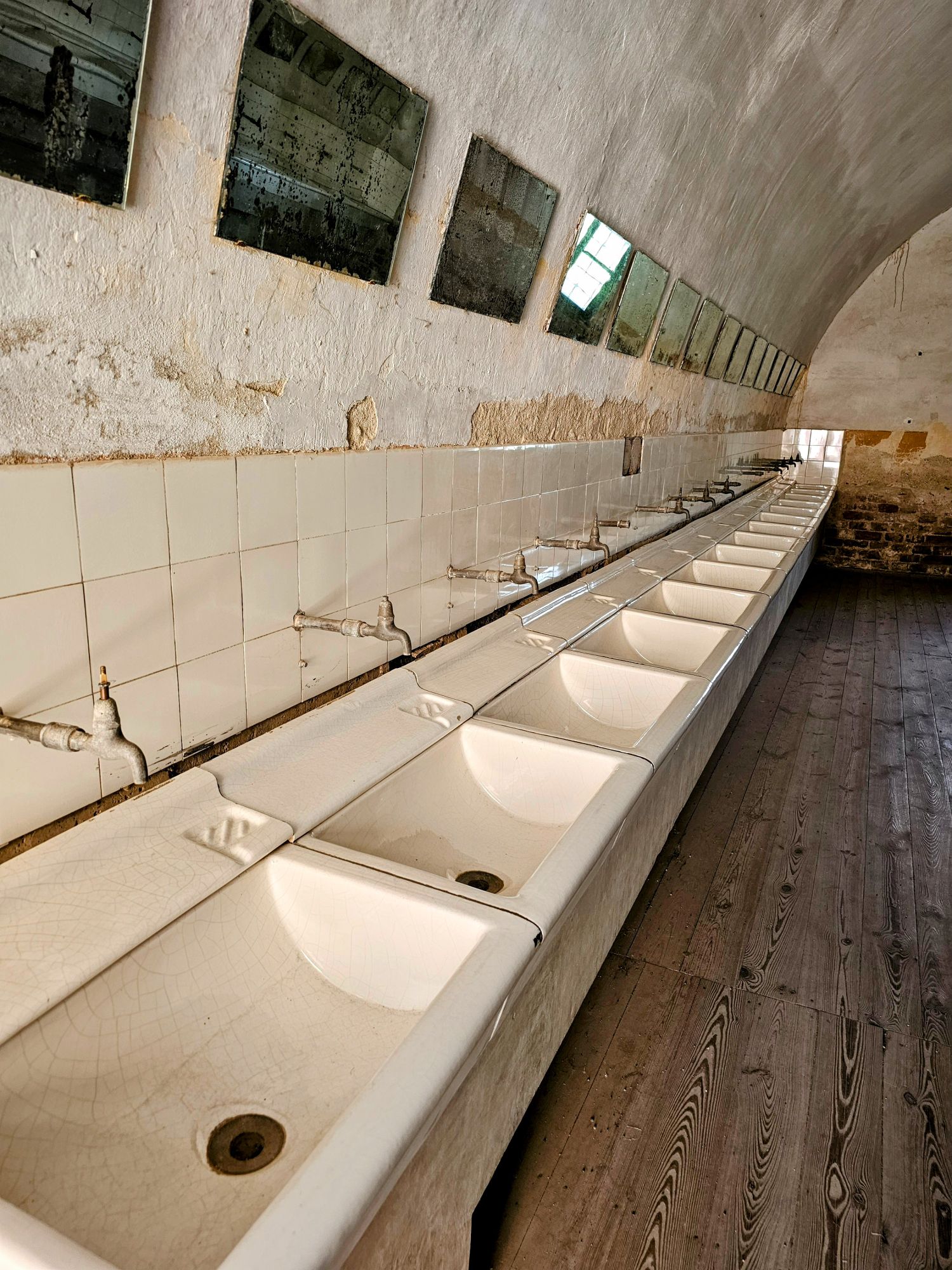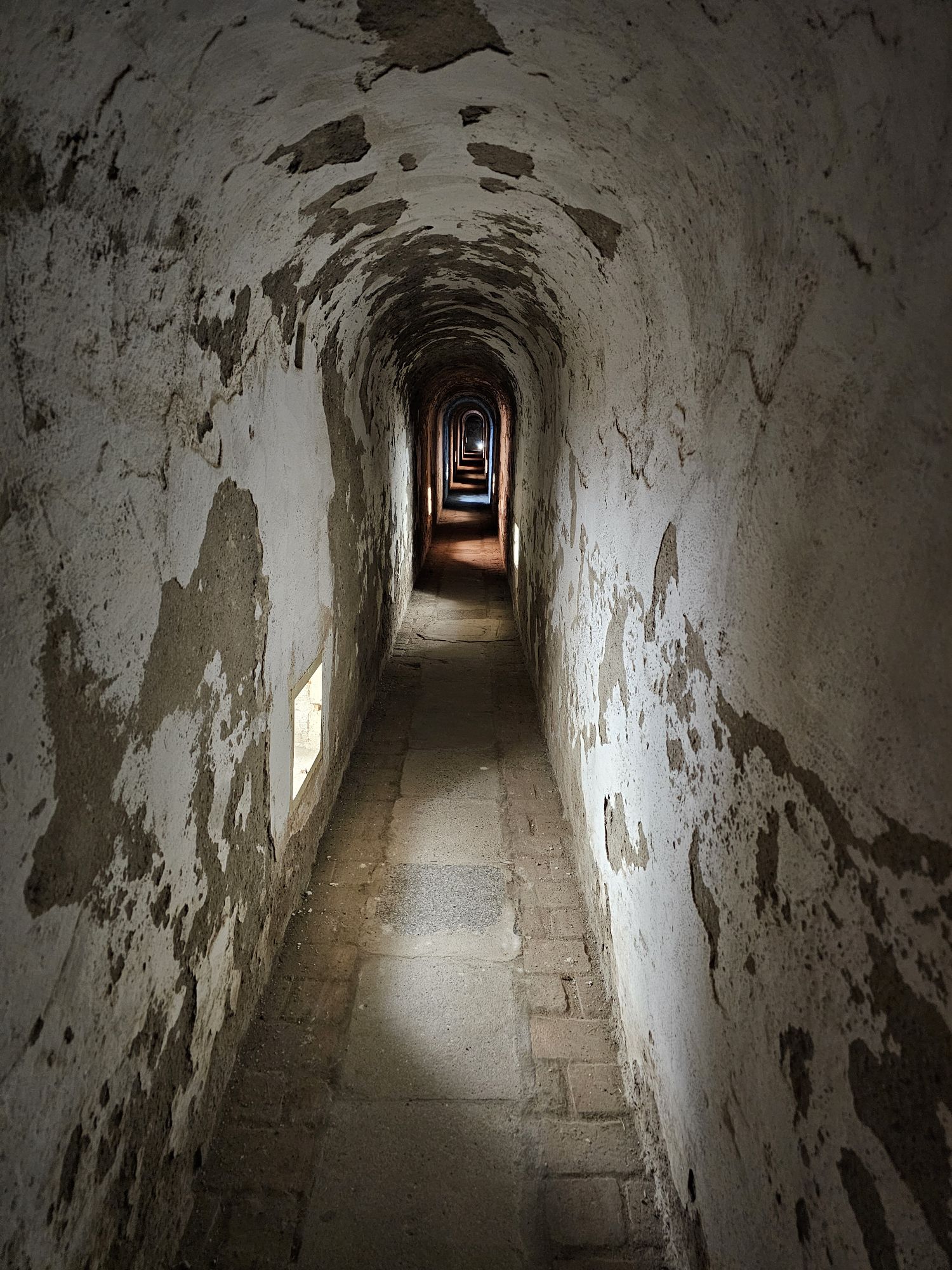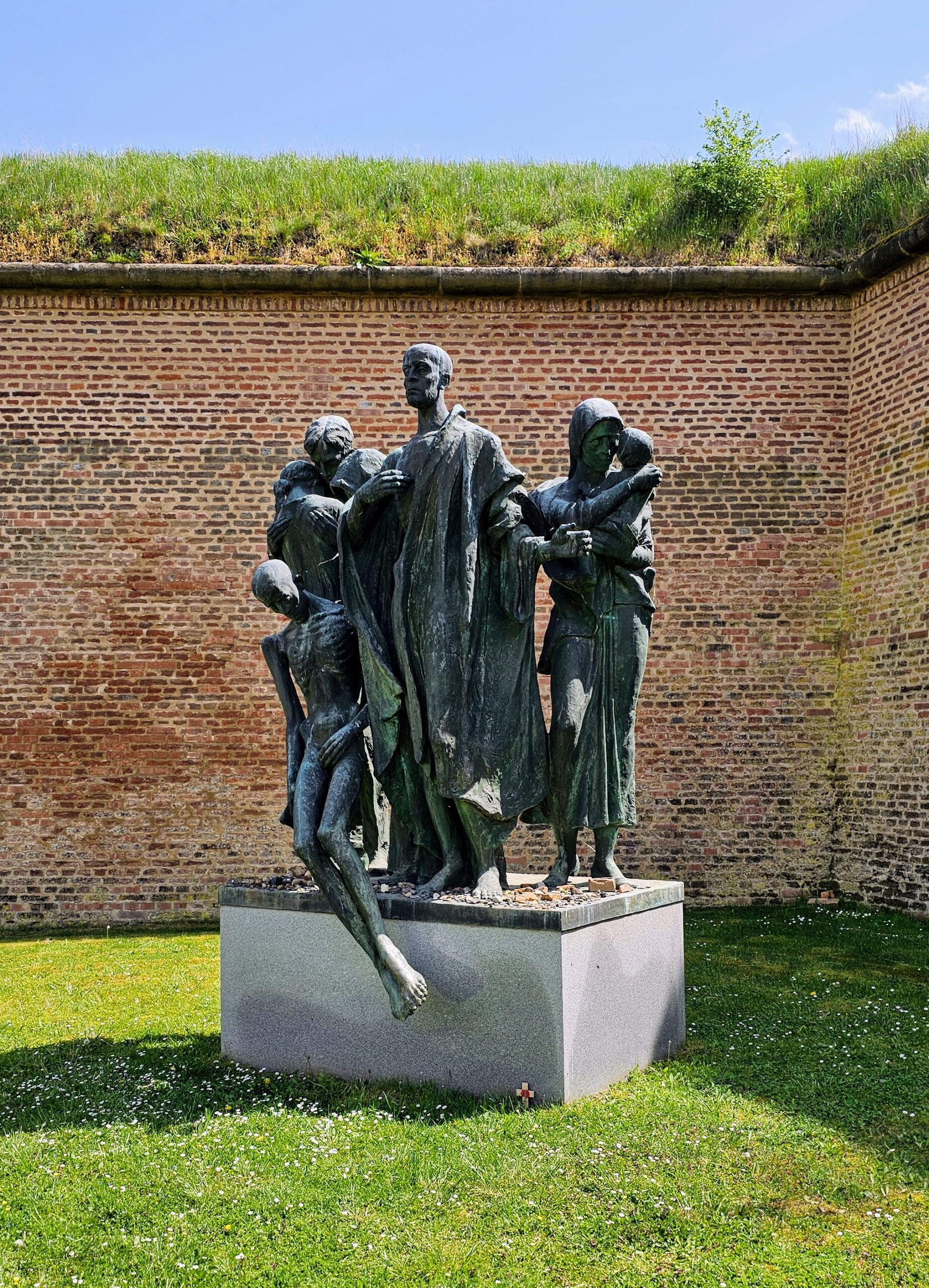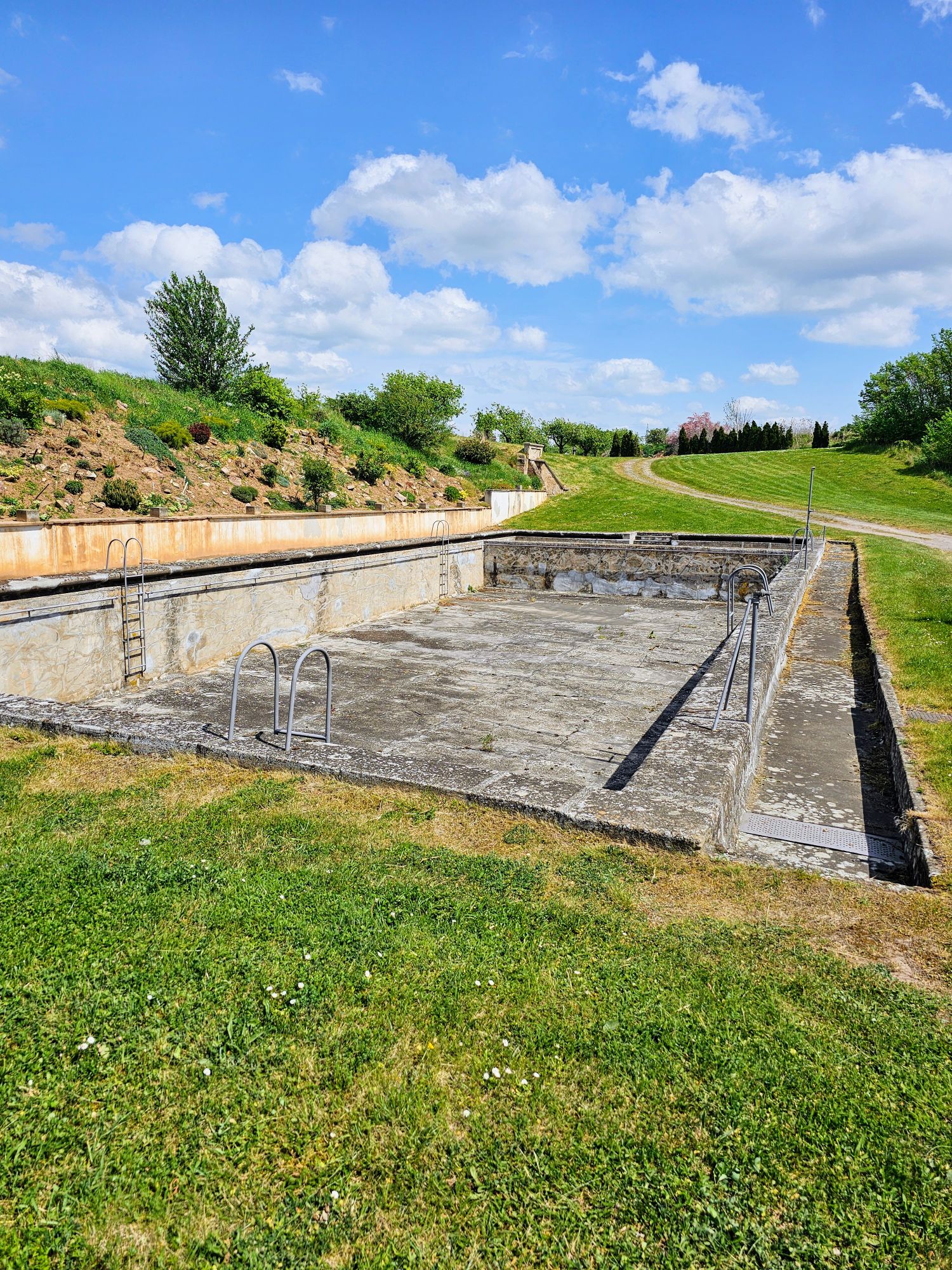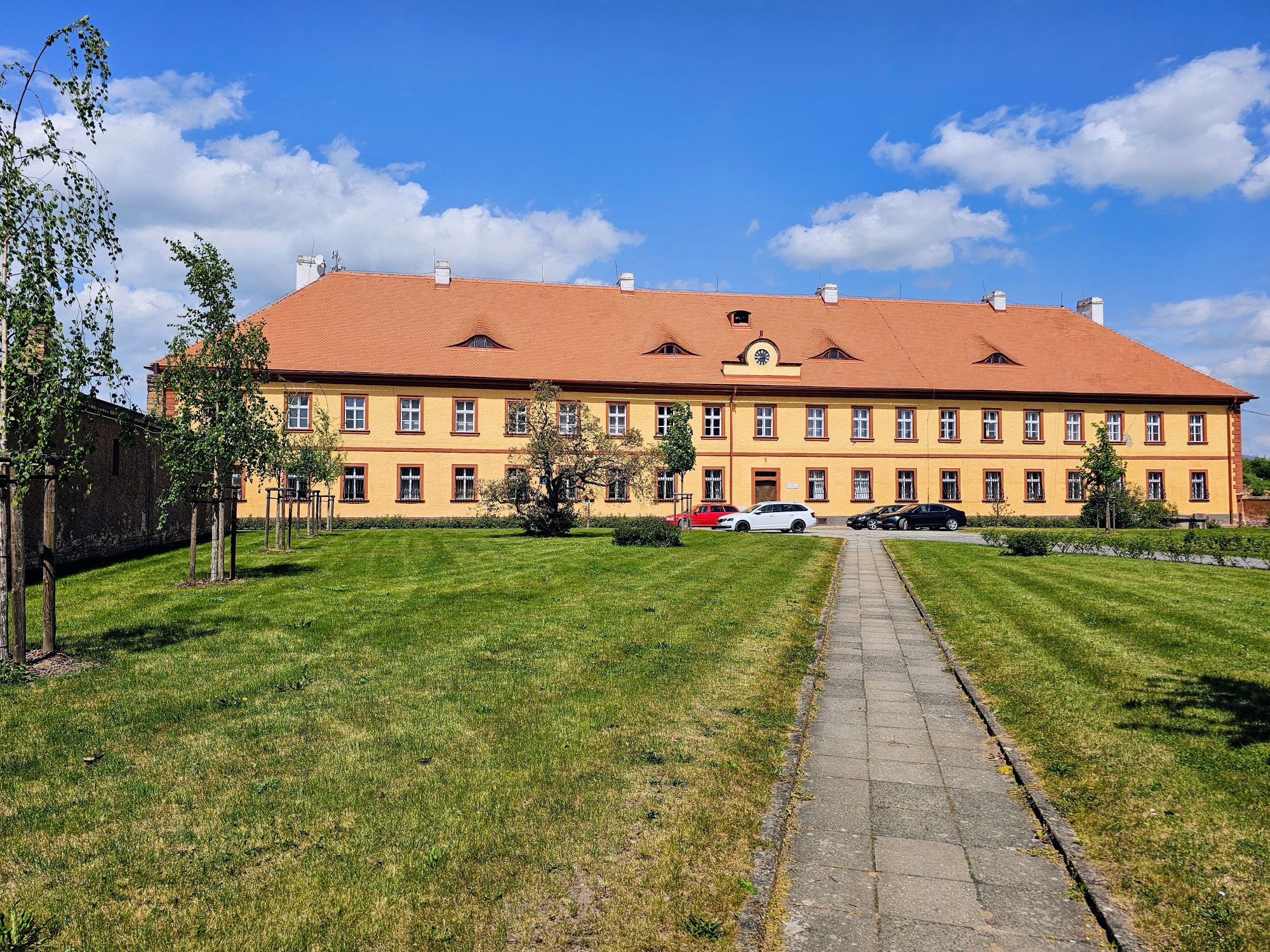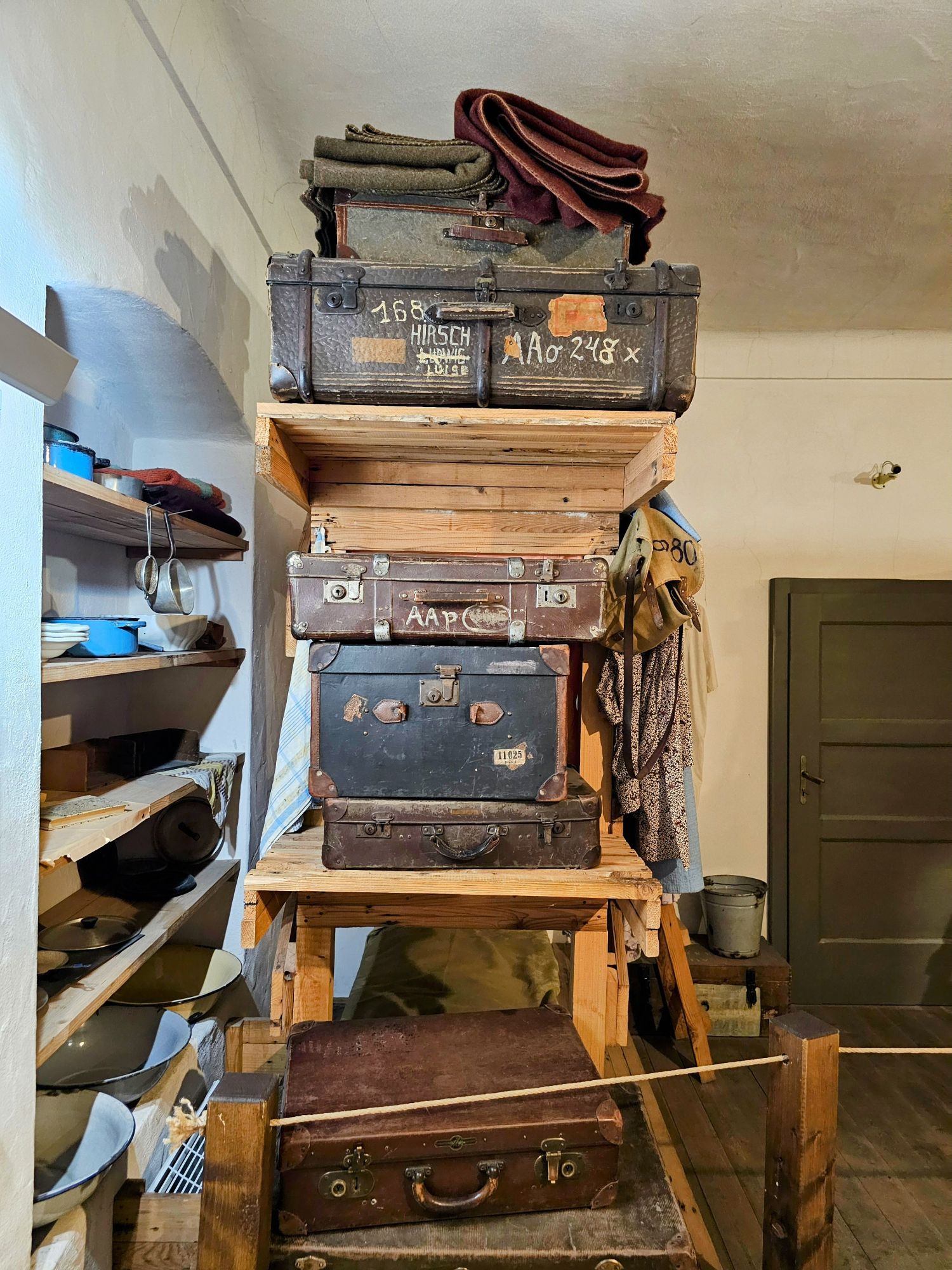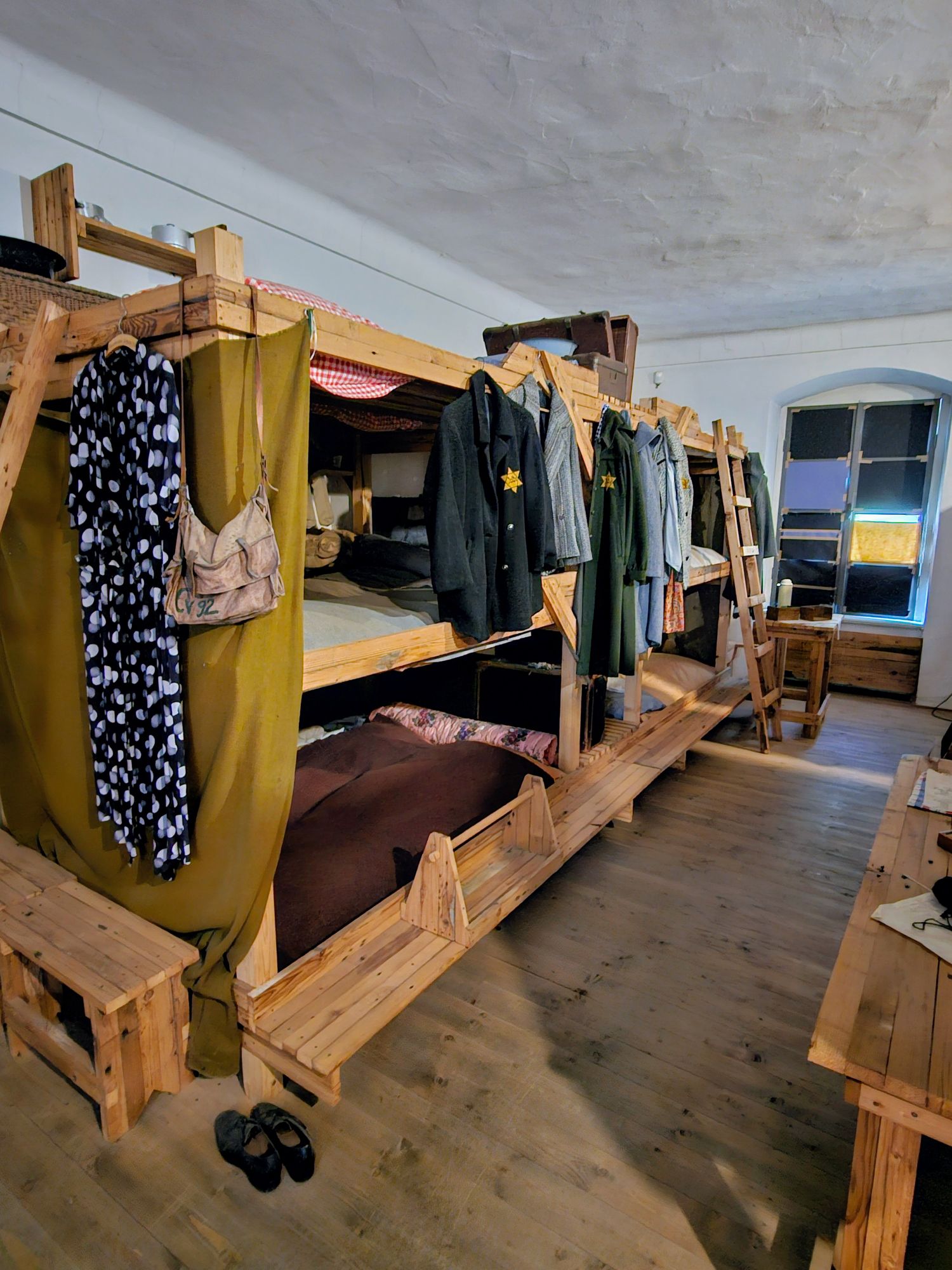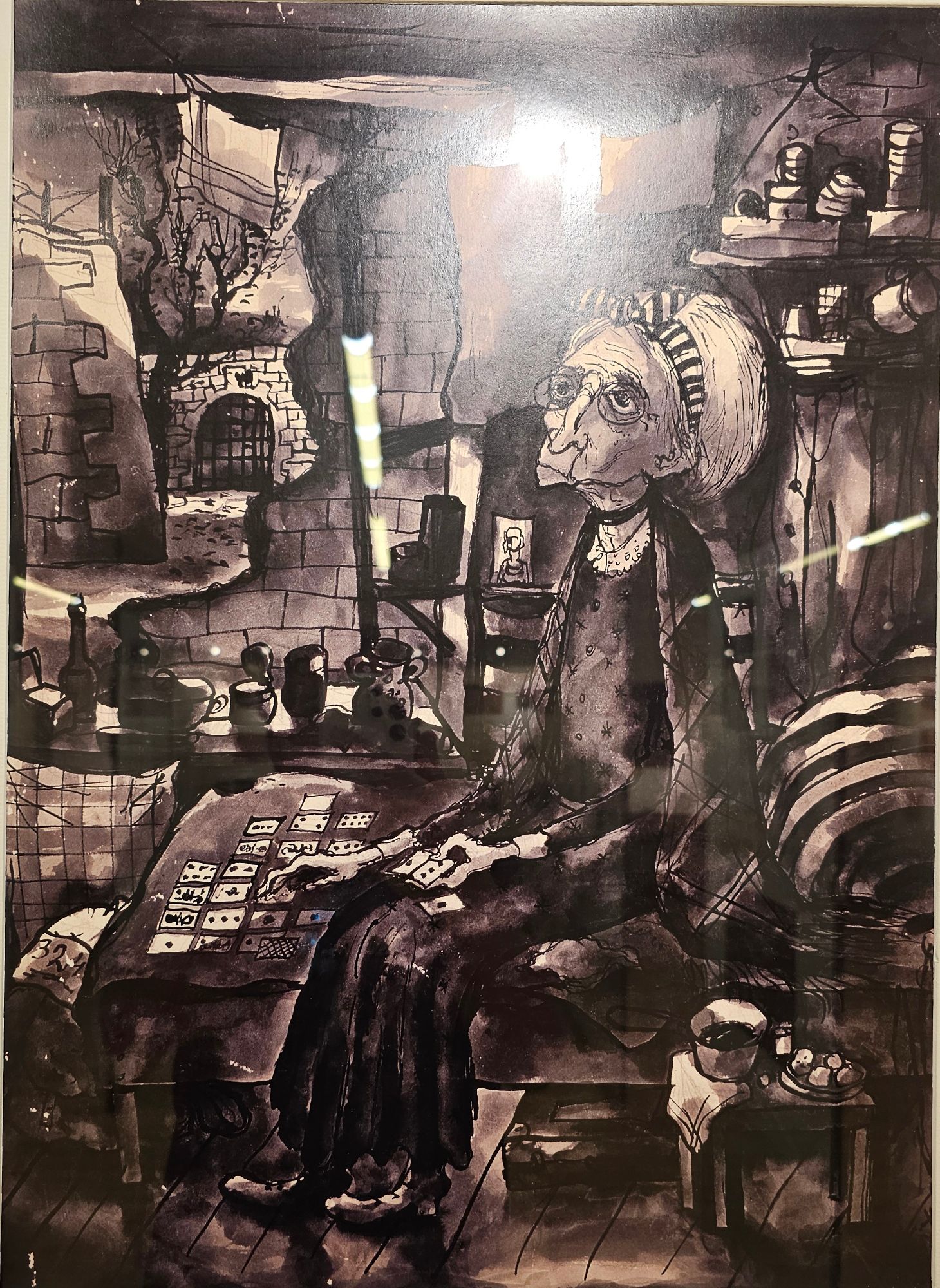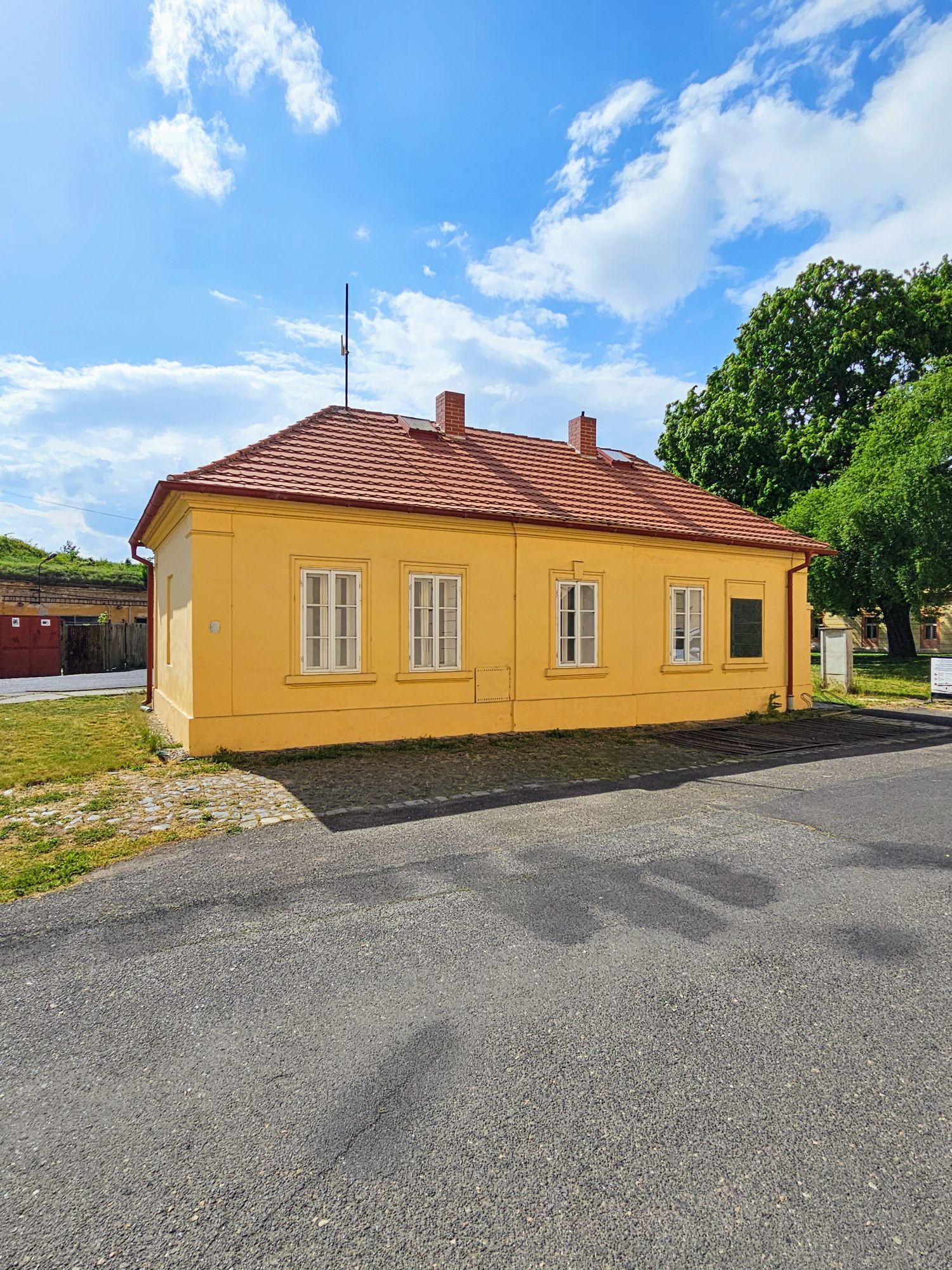We hired super-guide Michal to guide us again to the city of Terezin, where there are the remnants of a Jewish Ghetto/Concentration Camp, as well as a small fortress turned into a prison by the Nazi’s. Michal is so good I need to repost his website, Real Prague Tours, so that you can book him directly when you come here. He is the best, trust me!
Our first stop was the Ghetto Museum.
This Ghetto is a little different than the rest we have visited or read about. Hitler led these Jews, mostly seniors and children, to believe that he had built them a city to protect them from the stresses of the war. They were given freedoms that made them think things were somewhat normal and they might actually have a life to go back to.
The building that houses the Ghetto Museum was set up as a school for Jewish boys aged 10-15 years old. Just after entering the museum there are displays along the walls, depicting all of the Jewish children who were ultimately murdered after passing through this Ghetto and onto the death camps, mostly Auschwitz. While many Jews and other dissidents died in the Ghetto and adjacent Terezin prison, it was not due to gas chambers. Most of the deaths here were from starvation, freezing or disease.
One of the Jewish boys, 14 year old Petr Ginz, was allowed to publish a weekly magazine that told the news of the what was going on in the Ghetto, which was pretty much unheard of under Nazi leadership.
Fortunately, when he was about to be sent to Auschwitz to be murdered, he secretly gave a copy of every magazine he created to his sister, who survived the war, so much of what happened here was saved for future generations to learn from. Below is an example of some of the magazine covers he created.
This was a poem one of the Jewish boys wrote for the magazine. It speaks for itself.
He even wrote up a story about how the crematorium in the Ghetto worked, as there were people dying daily from various ailments or mistreatment.
The Ghetto Museum had several displays that showed how the Jews were dehumanized not just by the Nazi’s, but the complicit local population as well. This cartoon is actually from school textbook with a caption reading “Poisonous Mushroom”. I’d find it hard to believe just a few years ago, but with all of the bullshit going on with our ignorant youth today, I’m no longer surprised by anything!
You can’t visit a WWII Jewish Museum without your fair share of Yellow Badges they were forced to wear. I thought this display was excellent.
Our guide explained that the red lines on the floor in this display are supposed to represent train tracks. If would have been far more effective if the lights had all been working.
This is a sample of what an advertisement board looked like within the Ghetto, with dates and times of various events, trying to make the Jews believe that all was normal.
The grand staircase as you enter and depart has all of this artwork created by the children of the Ghetto, which surprisingly weren’t destroyed by the Nazis.
Michal then took us to the prison portion of Terezin, the star shaped small fortress built during the 18th century to protect the Bohemian lands from invasion by Prussia. Prussia never invaded, but the Nazis did, and the fortress met their needs as a prison. On the approach to the entrance is the Jewish cemetery just outside the prison.
This is the formidable entrance to the prison.
Upon entering, this is the first section that the prisoners would see. This is the area where all of the administrative functions would take place, and they were given their striped prison clothes. This was a far different area than the Ghetto, which was still trying to show the inhabitants that the Nazis weren’t out to kill them. The prison was for the forced labor and torture of political prisoners and others the Nazis deemed unworthy of living in the Ghetto.
This text is famous from Auschwitz, but was repeated elsewhere in the concentration camps and prisons….a lie stating “work sets you free”. This was the entry to their new homes.
We ventured into Block A to see what the conditions looked like.
This was what the actual beds looked like in the prison. They would be given a small amount of hay to place on the boards of the bunk beds, and that was it.
This room was one of the worst of all to be in. As a punishment they would put dozens of men in this small room so they couldn’t even lay down, and they only had the one hole in the wall (middle of the photo) for fresh air. That’s our guide Michal looking up at a spider on the wall…or a reflection…not sure.
This plaque is set in the wall of Block A.
This fortress served as a prison well before WWII. This is the former cell of 19 year old Gavrilo Princip, who assassinated Franz Ferdinand, heir to the Austro-Hungarian empire, in Austrian-occupied Sarajevo in June 1914. This act was the catalyst that started WWI.
Six of the participants in the assassination plot were brought to Terezin to serve their jail sentence, and four of them died here, including Princip, who died of tuberculosis 4 years into his 20 year prison sentence.
Back to WWII, despite the ominous looks of this contraption, this was a large washing machine which used steam to delouse the prisoners clothing once a month or so. Despite ridding the clothing of lice and other bugs, they never cleaned out the barracks, so it didn’t make a difference.
This is a shower room where the prisoners were allowed to clean themselves once a week. They showered in shifts, and 3 men had to gather around each shower nozzle. Each shift had 3 minutes to shower, so they were often left still covered in soap. The most hated of the prisoners, mostly Jews, were forced to shower last, when all of the hot water was gone.
Due to constant political pressure about how the prisoners were being treated, the Nazi’s finally relented and invited the Red Cross to visit Terezin in June 1944. In a carefully planned and elaborate hoax, the Nazi’s spruced the place up, and even installed the below bathroom facilities to show how well the Jews were being treated, facilities that never ended up actually being used.
We saw a video that showed that gardens were planted within the prison, cultivated by the prisoners. They painted houses in the Ghetto and fixed up the barracks to make it look like things were nice. The Nazis even staged social and cultural events in the Ghetto, including a soccer game, for the visiting dignitaries. The Jews were told that if they went along with the ruse they would be safe, but in the end they were all deported to be murdered.
Michal pointed out this spot on the wall, where three prisoners were able to secretly build a small ladder and escape over the wall on December 6th, 1944. These prisoners, Josef Mattas, Milos Esner and Frantisek Marsik all ended up making it to freedom!
We then walked through a tunnel built through the fortress. While Michal said it was 500 meters long, it felt like at least double that!
The tunnel comes out at this spot where prisoners were executed for the most minor of offenses, with no trial and no judge. The structure on the ground is for placing a machine gun so a Nazi could ruthlessly kill the prisoners assembled in the background. The worst atrocity here happened on May 2, 1945, six days before Terezin was liberated by the Soviets. Knowing the end was near, the Nazis executed 51 mostly young members of resistance groups at this very spot.
This nearby memorial is for all the prisoners who died or were murdered here.
During WWII, the number of prisoners kept growing, so the Nazi’s actually had to build additional barracks. These are the new ones they built. They shoved hundreds of people inside rooms like this, and together with their body heat, the skylights apparently made the temperatures unbearable.
We passed a swimming pool that was built by the prisoners for the Nazi families who resided here with the commanding officers of the prison. This completely reminded us of “Zone of Interest”, the 2023 movie that just won the Oscar for Best Foreign Movie (and was nominated for Best Picture as well). If you haven’t seen it, I urge you to do so.
This building, called the “Lords House”, is where the Senior Officers of the prison lived…another reminder of the “Zone of Interest” movie.
Our last stop was another museum, which had a reproduction of what the women’s barracks looked like in the Ghetto. Michal advised us that some of these items of luggage are actual pieces from WWII!
The clothes and scene almost look normal. It’s just terribly sad that these people didn’t know what awaited them after this false existence!
This piece of artwork, created by a Jew in the Ghetto, reminds me so much of music videos by my favorite musical artist, Steven Wilson!
This is my current favorite Steven Wilson video…for comparison. I can’t wait to get back home and crank this to 11!
The last part of our tour was this train depot, the last stop for the Jews headed to the Ghetto/Concentration Camp/Prison. The rails are missing leading up to this site, but the depot remains, a sad reminder of a past that will never fade from memory.
This was a very somber stop, as are any with links to the Holocaust, but I appreciate visiting these places, upon the guise of “never forgetting” what happened here in Europe!
Up next, I’m going to post a few remaining photos of Prague, as they didn’t fit into any other category, or the posts I was writing were just too long in the first place. As always, thanks for reading!

